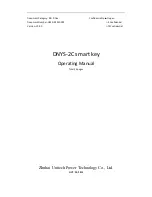
13
1
Make sure the bench you are using is free of squeaks or other noises that might
affect the quality of the recording. Remember the microphones are very sensi-
tive and can pick up unwanted noises.
2
When recording at home, be sure to place the microphones on the back side of the piano, close to the
soundboard (see pg.36 - 40 for information on proper microphone placement guidelines). Since the
microphones are very close to the piano you can hear any pedal noise very
clearly. If you simply step on the pedal, the sound of the pedal may be very loud
through the microphones so it is better to step the pedal very gently but firmly if
possible to reduce extraneous pedal noise. If you still hear pedal noise you may
want to have a piano technician adjust your piano to reduce extraneous noises
or creaks. In some cases you can reduce or eliminate the pedal noise by adjusting the EQ (see pg.21).
3
If the recording level is set too high, any great performance will be distorted and sound bad. If you are
hearing distortion adjust the piano microphone’s LEVEL knob until the first red LED on the L/R level
indicator on the front panel lights when you play the loudest passage in the song. If you are playing
loudly and the first red LED does not light on the level indicator even with the piano microphone LEVEL
knobs set to maximum PR-1 this is the optimum setting and the PR-1 will make a good recording.
4
Using reverb when recording can enhance the sound quality of the recording but, if the reverb is set too
deep, the performance may sound unclear and not professional. Be very careful when you add reverb to
your recordings. As a general rule, less is more.
5
To ensure that you get the best possible recording we recommend that you have your piano tuned before
making any important recordings.
6
Because the PR-1 piano microphones are placed below the piano it makes no
difference whether the lid is open or closed when you record with the PR-1.
7
The PR-1 system is designed to avoid recording extraneous noises that might occur
during recording but the microphones are very sensitive so it is possible that loud
noises will be “heard” by the microphone and recorded. Try to keep the room where
you are recording as quiet as possible during the recording. Even in professional
recording studios noise from air conditioners, gardeners, low flying airplanes, and
other environmental sources can mar an otherwise good recording. Try to record at
a time when these types of noises can be kept to a minimum.
Here are a few tips and suggestions to help you to make the best recordings possible with the PR-1.
TIPS AND SUGGESTIONS FOR GETTING
A GOOD RECORDING
















































